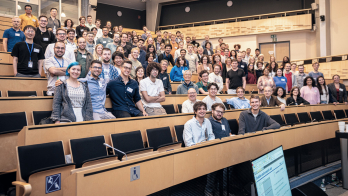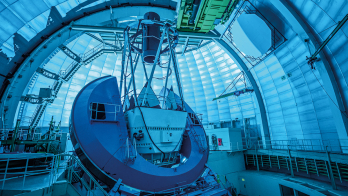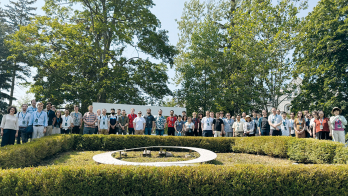The XENON collaboration has announced the result of analysis of data taken with the XENON100 detector during 13 months of operation at INFN’S Gran Sasso National Laboratory. It provides no evidence for the existence of weakly interacting massive particles (WIMPs), the leading candidates for dark matter. The two events observed are statistically consistent with one expected event from background radiation. Compared with their previous result from 2011, the sensitivity has again been improved by a factor of 3.5. This constrains models of new physics with WIMP candidates even further and it helps to target future WIMP searches.
XENON100 is an ultrasensitive device. It uses 62 kg of ultrapure liquid xenon as a WIMP target and simultaneously measures ionization and scintillation signals that are expected from rare collisions between WIMPs and the nuclei of xenon atoms. The detector is operated deep underground at the Gran Sasso National Laboratory, to shield it from cosmic rays. To avoid false events occurring from residual radiation from the detector’s surroundings, only data from the inner 34 kg of liquid xenon are taken as candidate events. In addition, the detector is shielded by specially designed layers of copper, polyethylene, lead and water to reduce the background noise even further.
In 2011, the XENON100 collaboration published results from 100 days of data-taking. The achieved sensitivity already pushed the limits for WIMPs by a factor 5 to 10 compared with results from the earlier XENON10 experiment. During the new run, a total of 225 live days of data were accumulated in 2011 and 2012, with lower background and hence improved sensitivity. Again, no signal was found.
The two events observed are statistically consistent with the expected background of one event. The new data improve the bounds to 2.0 × 10–45 cm2 for the elastic interaction of a WIMP mass of 50 GeV. This is another factor of 3.5 compared with the earlier results and cuts significantly into the expected WIMP parameter region. Measurements are continuing with XENON100 and a still more sensitive, 100-tonne experiment, XENON1T, is currently under construction.
The XENON collaboration consists of scientists from 15 institutions in China, France, Germany, Israel, Italy, the Netherlands, Portugal, Switzerland and the US.







